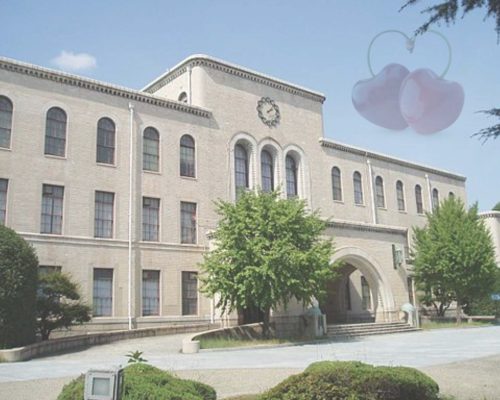Listening Cherry 25 – ELF one two three!
In the 1980s I worked at 神戸大学 (Kobe University, Japan) as a teacher of English. Towards the end of my time there, I was invited to a university party hosted by the president of the university. It was for the international students who were about to return home after varying periods of study – usually a year, sometimes more. I was amazed at how many there were (they weren’t there to learn English, so I hadn’t come across any of them) and at the range of countries they were from. I walked up to a group, and we did introductions all around in English. They were from Brazil, Hungary and France. They then – probably assuming that I could manage linguistically – resumed their conversation in Japanese – their lingua-franca of choice. I was amazed. It a was wonderful, surprising, but electrifying experience for me to witness a language other than English being used as a lingua franca. It was obvious from the introductions that they were all good at English, but it was not the language that they relaxed into. Quite naturally, after a year or more in Japan, Japanese was their go-to language.
From my understanding of a recent paper by Jenny Jenkins (2015 available here) this is an example of ELF3, of which the Jenny gives the working definition ‘Multilingual communication in which English is available as a contact language of choice, but is not necessarily chosen’ (ibid, p. 73). As you will notice from this definition, ELF now aligns itself academically with Multilingualism. How did this happen?
[I have written a six-page account of Jenny’s paper, in which I try and describe the movement from ELF1 through ELF2 to ELF3, which you can find here. This blog is an adapted version of the final section of the working paper.]
ELF first aligned itself with World Englishes, and sought to identify ELF varieties in a period that Jenny refers to as ELF1. But having recognised that the infinite variability of the evidence, the varieties project came to an end, and researchers subsequently aligned themselves with Communities of Practice (CoP see here for a definition) in in a phase that Jenny refers to as ELF2. But Jenny has recently realised that there were problems with ELF2’s orientation with CoP:
- English was viewed as the superordinate language
- Insufficient attention was paid to the emergent nature of ELF (p. 64) in transient encounters
- It was unrealistic for researchers to focus exclusively on stable groupings of ELF users as the norm
- Definitions of ELF2 did not allow for situations in which English is available, but not used.
Jenny proposes that the solution to these problems is to place multilingualism ‘at the forefront, its raison d’etre’ (p. 63). She suggests viewing ELF as ‘within multilingualism rather than the current view which sees multilingualism as an aspect of ELF’. She suggests the term ‘English as a Multilingua Franca’ which she defines as:
Multilingual communication in which English is available as a contact language of choice, but is not necessarily chosen.
Later in the paper (pp. 75-76) Jenny lists four key aspects:
- Multilingualism is the superordinate
- The other languages of everyone present … are also present in the interaction.
- Need to rethink the notions of multilingual repertoires/resources – JJ suggests ‘repertoires in flux’
- Not communities of practice, but ‘contact zones’. (The notion of English as a Multilingua has to be able to characterise transient, ad hoc, and even fleeting ELF groupings).
The interaction between myself and native speakers of Brazilian, Hungarian and French in Kobe now be described using some of the terms of this list of key aspects. Our group of four people at the party became a ‘contact zone’ which was a transient ad-hoc grouping, in which English played a role in the introductions phase – but not the main role in the interaction as a whole. For the principle parts of the interaction, Japanese was used. The languages known (I assume) by all four of us to be available were: English, French, Japanese, Hungarian, Portuguese. But each of us might have other languages in our repertoires that the others did not know about – in my case, there was Cantonese (intermediate level in specific topic areas: child control, nappy states, teething, food and cooking).
So here we are in the era ELF3. The above paragraphs are a rather dense/compact attempt to explain to myself the evolution from ELF1 through ELF2 to ELF3. For a more gently paced version you can read this Working Paper here. But most importantly you must read Jenny’s paper here.
Image from here.



Leave a Reply